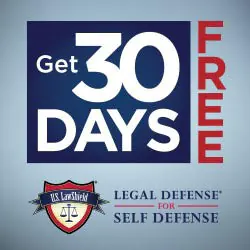Why Small Unit Tactics (SUT) Don’t Work for Civilians — And What Does: A Cajun Arms Guide
A Cajun Arms Guide
There’s a lot of flash out on the internet and at the range: photos of teams clearing doors, slick gear, and talk of “small unit tactics” (SUT). It looks cool. It sounds professional. And for some amateur “operators” it becomes a hobby — a game that mimics military training. But if you’re a civilian whose priority is protecting yourself, your spouse, and your kids, SUT is usually the wrong toolbox for the job.
This isn’t an insult — it’s reality. Let’s break down why small unit tactics for civilians rarely translate into real-world home defense, and what training actually increases your odds of winning. (And by “winning,” we mean the one objective that matters: you and your family walking away alive, uninjured if possible, and not facing criminal charges.)
Small Unit Tactics = Designed for teams with logistics, comms, and rules of engagement
Why Small Unit Tactics (SUT) Don’t Work for Civilians — And What Does: A Cajun Arms Guide
- Small unit tactics are brilliant at solving military problems: coordinated movement, suppressive fires, bounded sectors of responsibility, and communications across radios. Those systems rely on:
- Multiple trained teammates who operate under the same doctrine
- Reliable comms and gear that won’t fail under stress
- Clear rules of engagement and a legal framework that authorizes use of force
- Time, distance, and space to maneuver
Most civilians don’t have that. In your home you have confined spaces, family members who aren’t trained the same way you are, no backup, and legal standards that are very different from combat. Applying SUT in that environment often becomes a performance, not a practical solution — which is why some of it is just “wanna-be soldiers” playing at tactics. If you really want to role-play, go buy a paintball ticket.
Why SUT can make civilians less safe
Trying to graft military-style team maneuvers onto a household response plan can introduce problems:
- Confusion under stress: Complex movements and jargon increase the chance of hesitation or friendly conflict.
- Unnecessary exposure: Formations and clearing techniques assume you have cover and supporting fire. In a house, those assumptions are usually false.
- Legal risk: Aggressive tactics can escalate a situation or create legal exposure — use of force standards for civilians are strict and fact-specific.
- False confidence: Training that looks tactical doesn’t guarantee safe outcomes. Confidence without applicable skill is dangerous.
The civilian priority: simple, repeatable, survivable
Civilians should train to win by the metrics that matter in civilian life. Winning here means:
- You and your family are alive.
- You are not badly injured or hospitalized.
- You are not facing criminal charges or civil liability.
Those outcomes come from training that’s simple, practiced, and designed for family dynamics and domestic spaces.
Pairs training: the single most practical investment for civilian defense
If you want training that moves the needle, prioritize pairs training — you and your significant other (or another household member) training together until reactions are dependable. Pairs training covers:
- Shared plans and roles: Who calls 911, who secures kids, who moves to the safe room, and who covers the entry.
- Simple, stress-tested communication: Short, pre-practiced commands that work in chaos.
- Movement in close quarters: How to move through hallways, stairs, and bedrooms safely and efficiently.
- Decision-making under pressure: When to stay, when to evacuate, and how to avoid escalation.
- Legal and after-action considerations: How to preserve evidence, how to talk to police, and how to document the incident.
Train together, and you stop being two people with individual ideas and become a functioning team that actually operates in your home environment.
Practical civilian training topics that matter
These are the skills most likely to keep you and your family safe:
- Home defense planning and layered security (locks, lighting, safe rooms)
- Pairs training and family defense training — practiced roles and rehearsals
- Defensive pistol fundamentals for accuracy under stress
- Low-light and no-light movement inside the home (without theatrical formations)
- De-escalation and legal awareness — understanding when force is lawful and how to interact with first responders
- Medical trauma basics — tourniquet use and bleeding control for worst-case survivability
At Cajun Arms we focus on training people to be effective in the environments they actually occupy — their homes, local stores, and commute routes — not on making civilians into mock soldiers.
“Winning” has many definitions — pick the ones that protect you
People get caught up in “tactical victories” — clearing rooms, stacking doors, and winning mock fights. But in the civilian world the common denominator of any real win is simple: being alive and legally protected. That can include:
- Avoiding an encounter altogether (prevention and deterrence)
- Safely escaping or evacuating with family intact
- Stopping an immediate threat while minimizing harm and legal exposure
- Providing medical care to those injured until first responders arrive
Those outcomes come from discipline, planning, repetition, and training tailored to civilian realities — not from mimicking military small unit drills.
Final thought: Match your training to your mission
If your mission is to protect your home and family, ask yourself whether your training helps you meet that mission under real conditions. Does it simplify decisions under stress? Does it include your household? Does it keep you out of legal trouble? If the answer is “no,” rethink the course.
Want training that actually helps you win? Join Cajun Arms for courses focused on pairs training, home defense planning, and defensive firearms fundamentals — practical, repeatable skills you’ll use if it matters. Protect the people who matter most with training that’s designed for civilians, not for the battlefield.
Ready to train together? Visit our Cajun Arms course page or call us to schedule a pairs training session. Make sure your household is on the same page — that’s where winning starts.
- 2025/26 Trends in CCW & Concealed Carry: What Every Responsible Gun Owner Should Know
- Mastering Speed and Precision in Defensive Pistol Training: A Complete Guide
- Why Small Unit Tactics (SUT) Don’t Work for Civilians — And What Does: A Cajun Arms Guide
- What to Expect in a Defensive Pistol Class
- Essential AR15 Maintenance Tips for Maximum Reliability and Long Service Life
- Bad Guys Come Out in the Heat
- Looking for “Firearms Training Near Me”? Here’s What to Expect—and How to Choose the Right Instructor
- Speed vs. Precision: What Matters Most in a Defensive Shooting?
- Dynamic Movement & Shooting: Train Like You Fight
- Firearms Training and Home Defense
- From Basics to Advanced: Tactical Shooting Courses at Cajun Arms
- Firearms Training Near Me - Cajun Arms West Chester, PA
- Master Your AR-15 with Expert Training at Cajun Arms
- Defensive Pistol Training for Self-Defense — Cajun Arms
- Choose the Best Home Defense Firearm — Cajun Arms Guidance
- Becoming a Firearms Instructor: The Path to Excellence
- Empowerment Through Precision: Elevating Your Self-Defense Firearm Skills
- Training Scars: Breaking Free From Flat-Range Habits
- Vehicle Defense
- WATCH WHAT YOU FEED YOUR GUN
- CAN YOU BE ACCOUNTABLE FOR YOUR SPEED?
- Training with Micro-Compacts
- A Follow Up to the “Hardest Shooting Fundamental”
- So You Want To Go Fast?
- The Hardest Shooting Fundamental: Mastering Follow-Through
- Why Are You Just Standing There? Shooting From Unconventional Positions
- New Gun, New Habits
- Home Defense Shotgun Set Up
- What Should I be Doing at the Range?
- Fighting From The Ground
- Take Charge of Recoil, don’t let it control you…
- Think Before You Speak
- Grab a Partner
- The Risks of Being Nice…
- Lead With Your Eyes (not your muzzle)
- Train as You Carry… Leave the competition and tactical gear behind
- KNIFE VS GUN - A quick scenario to ponder
- Frankengun vs Factory
- Memory - Program Yourself
- Training for Injury
- Lights and Lasers and YouTube Ninjas
- Our Stance on Your Stance
- Training for More Than One Attacker…
- Keep Your Head On - Consistency
- Defensive Shotgun Accessory Do’s and Don’ts
- Charlottesville - lies and hypocrites
- Keep Your Finger Off the Trigger…
- …and Re-holster
- Unauthorized persons…
- Focus on What will Save Your Life
- Train for Success with your Firearms
- Every Day is a Good Day to Be Ready
- Appendix Carry - Is it right for you?
- Learn to See the Light: Low-Light Firearms Training You Can Use
- Anti-Gun Sentiment on the Intarwebs…
- Avoidance and Awareness
- Point Shooting: Does it work? Do you know what it is?
- About your self-defense carry ammo...
- See the Whole Picture... Know how to reload reflexively
- One-Handed Shooting
- Every Bullet Has a Price...
- On Magazine Changes... fighting for your life
- There is Such a Thing as Too Fast...
- A Threat at Arm's Length
- In defensive shooting, missing your target has consequences...
- AR15 for Home-Defense
- Operating out of your Comfort Zone...
- Every Bullet Has A Price - Operational Speed
- Car and Truck Gun Safety: Protect Yourself Responsibly
- Keep a Clear Head
- Get Training!
- Women and Firearms at Cajun Arms

